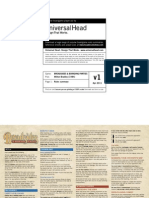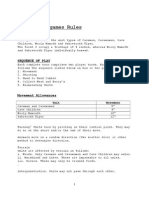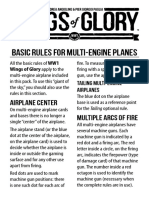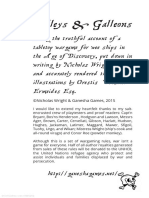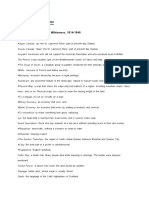100% found this document useful (1 vote)
303 views10 pagesOutdoor Naval Wargaming Guide
This document summarizes a naval wargame played on a patio. Key details:
- The game was played on the author's patio, which had flagstones resembling a seascape. Cardboard ships and hills were used as models to avoid damage.
- Simple rules were devised focusing on wind direction, ship movement and formations, and combat. Movement was based on a grid and wind direction. Combat involved rolling dice for hits and saves.
- The goal was an immersive outdoor experience that captured the essence of naval combat without complex record keeping. Setup and rules emphasized fluidity and minimal references while playing.
Uploaded by
chalimacCopyright
© © All Rights Reserved
We take content rights seriously. If you suspect this is your content, claim it here.
Available Formats
Download as PDF, TXT or read online on Scribd
100% found this document useful (1 vote)
303 views10 pagesOutdoor Naval Wargaming Guide
This document summarizes a naval wargame played on a patio. Key details:
- The game was played on the author's patio, which had flagstones resembling a seascape. Cardboard ships and hills were used as models to avoid damage.
- Simple rules were devised focusing on wind direction, ship movement and formations, and combat. Movement was based on a grid and wind direction. Combat involved rolling dice for hits and saves.
- The goal was an immersive outdoor experience that captured the essence of naval combat without complex record keeping. Setup and rules emphasized fluidity and minimal references while playing.
Uploaded by
chalimacCopyright
© © All Rights Reserved
We take content rights seriously. If you suspect this is your content, claim it here.
Available Formats
Download as PDF, TXT or read online on Scribd
/ 10

